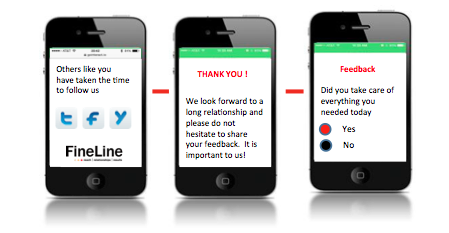Once upon a time companies advertised through newspaper and radio ads, and communicated with clients face-to-face. Thirty years ago, companies primarily used television ads, while connecting with customers primarily via phone. In the last ten years, companies have shifted much of their advertising to the Internet and now routinely communicate with customers through email and on-demand chat windows. Today when companies discuss ‘mobile strategies’ they look into not just phone calls on a landline, but text messaging and Internet pathways via mobile phones.
As we all know, times change and corporate norms rapidly evolve. In order for your company/organization to stay relevant and successful, you must be aware of the marketing and operational trends and adopt those that are most effective.
In today’s world, consumers are using their mobile devices to research, engage, and purchase from companies. Consumers are even donating via their mobile phones. And although other (more traditional) channels are still vital aspects of a big picture marketing plan, it’s imperative to have a solid mobile strategy to make sure your organization doesn’t miss out on prime communication opportunities.
To drive the point home, here are some stats from MobileCause, illustrating just how prevalent mobile usage is today:
- 60% of web searches and 72% of web page views are on mobile devices.
- 66% of emails are read on mobile phones.
- 79% of social media traffic is on mobile.
- 88% of smartphones use apps everyday.
If you’re thinking, ‘this is all well and dandy if you are a for-profit firm, but communications strategies for a non-profit organization is different,” think again. It has been reported that three our of four donors will do online research (a majority on their mobiles) before donating any money to a non-profit, and almost half of donors visit multiple non-profit websites before making a donation.
Armed with these statistics, it seems counter intuitive that 84% of nonprofits do not have a mobile friendly website. Doesn’t it?
Still not sure that targeting mobile phones is an effective marketing tool? Try this stat:
99% of text messages are read while only 14% of emails are read
You can be confident that texting is a viable, or arguably better, marketing avenue. Not only are text messages almost always read, but 90% of them are read within a mere three minutes! So this avenue reaches almost every potential donor, but does so within minutes. That’s pretty impressive if you ask me.
So, how do donors feel about text messages?
- 70% of donors report that texts are a good way for nonprofits to get their attention
- 62% of donors report they would like to use text to communicate with organizations
- Subscribers are five times more likely to respond to a text than an email
- Mobile subscriptions grew at double the rate as email subscriptions last year
- Subscribers are 3.5 times more likely tap a link in a text than click a link in an email
Now that we know text messaging for fundraising and donor communication can be productive, let’s discuss the best approach.
- First, your organization needs to make sure its donors agree to communicate via text.
- Second, your text messages cannot solely be ‘text-to-give’ format. This is a channel of communication and you need to work to foster a relationship and promote dialogue.
- Third, use visual aids. Pictures and videos will add entertainment to your text messages, encouraging donors to reply.
- Forth, mix it up! Don’t send the same offer/fun fact/call to action over and over again – donors will get tired of this and be less likely to engage with your organization.
- Fifth, don’t forget to follow regulations! You do not want to get fined because you did not follow protocol by failing to use the right disclaimers or not getting permission.
Happy texting!






